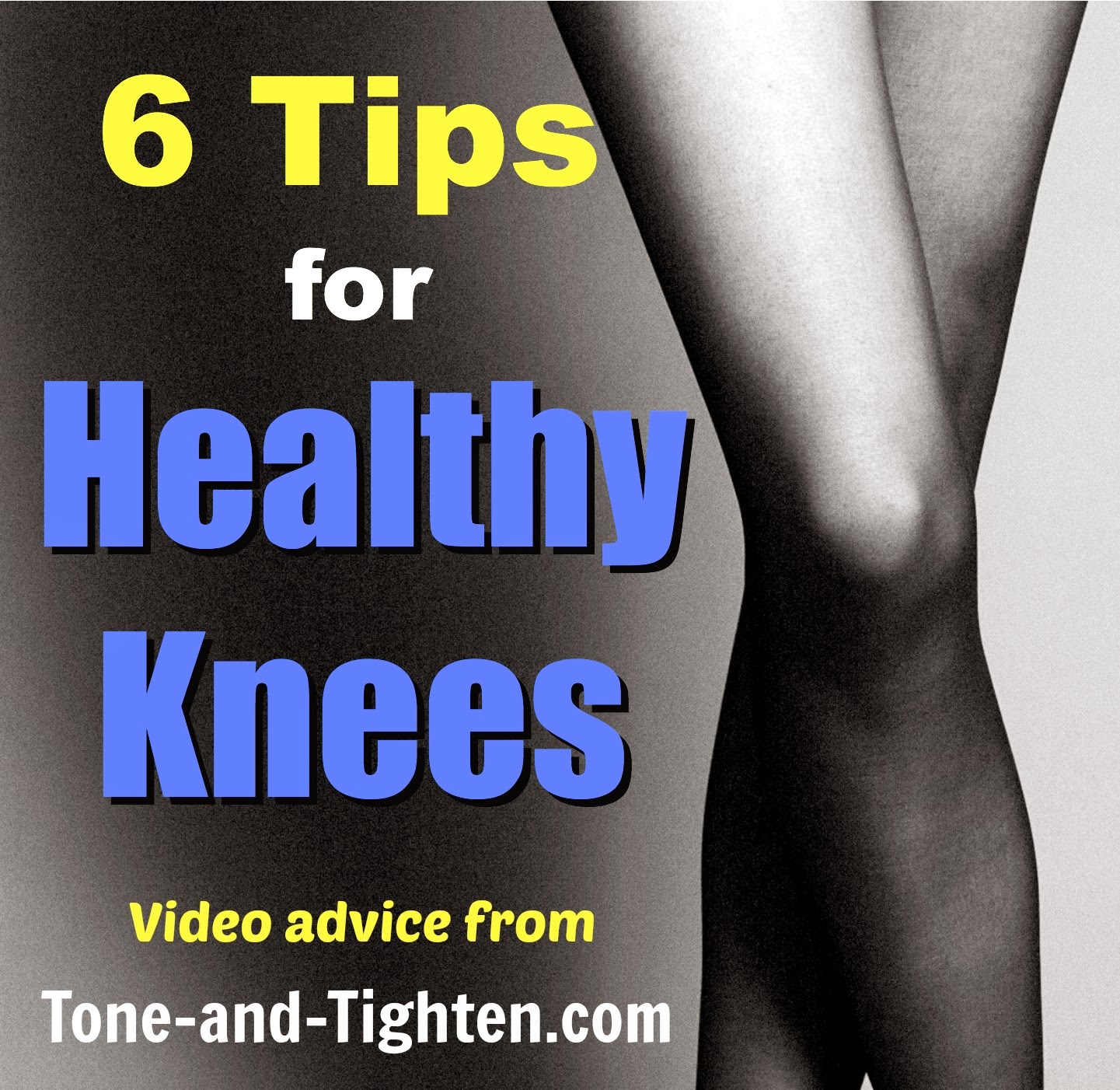Recently, I was invited to come onto Fresh Living (a local Utah lifestyle show) to discuss some tips and advice about how to keep your knees healthy throughout your life. The following video is a quick segment of what we discussed, but I also thought it would make a great post here on T&T where I can elaborate in a little more detail (without the stress of three cameras in my face!). That being said, today’s post is 6 tips to keep your knees in the best condition possible throughout your life. Remember, you’re as old as your knees feel!
When properly cared for, your knees can serve their valuable roles throughout your whole life. Here are my top 6 tips to maintain healthy knees:
1. Stay at a healthy weight. Every extra pound you add on puts about 4 extra pounds of pressure on your knees when you walk or take the stairs. Oftentimes when people come in to see me with knee pain they mention that they’ve recently put on some weight. All of the sudden that’s a lot more for your joints to support and can add some serious pressure in your knees. Once you shed that excess weight, though, symptoms improve—and oftentimes even disappear.
2. Strength training. Simply stated: strong knees are healthy knees. The mechanics of the joint improve greatly if there are more efficient forces acting on them. Keep in mind that while the primary movers of the knee joint (quads and hamstrings) are important, they’re not the only players in the game. Maintaining strong hips and ankles is also vital; which brings me to tip #3…
3. Don’t look at knee pain with a microscope– Knee pain can actually be a manifestation of a problem elsewhere. When people come in to see me for their knee pain I actually start by having them take their shoes and socks off and looking at their foot and ankle alignment. This is where the “rubber hits the road” in movement; oftentimes fallen arches and weak ankles can lead to knee pain. I would say the primary source of knee pain, though, comes from weak hips. The abductor/adductor groups and glutes are vital in healthy knee function (maintaining proper alignment, healthy running, endurance, etc). If your knees are painful consider an aggressive hip strengthening and ankle stabilization program. The outcomes may really surprise you!
4. Proper form is vital: Now that I’ve talked up exercise, it’s important that I put in a word for good form. While exercise is a vital part of healthy knees, doing exercises correctly is IMPERATIVE to proper strengthening. Speaking specifically of two of my favorite exercises, squats and lunges, my key cues to remember are make sure your knee stays directly over your toes (lunges) and don’t let your knee advance past/in front of your toes (squats and lunges).
5. Don’t stop running: So distance running has to be horrible for your knees, right? The answer is actually surprising: there is no correlation between distance running and knee osteoarthritis (OA). It’s actually quite the opposite! Runners have less incidence of knee OA than those who are sedentary (it’s the whole “maintain a healthy weight” thing I mentioned in point #1). Getting up and being active is a lot better for your knees than sitting around doing nothing. Of course keep in mind that running form is important to maintain healthy knees, but that’s a whole other post for a whole other day!
6. Genetics do play a strong role in knee health: The bottom line is genetics play a huge role in many facets of our lives. Everything from heart disease to cancer has a strong genetic component; oddly enough knee pain is the same way! If mom and/or dad had some knee pain due to arthritic changes, chances are their pain will be in your future as well. If I can offer one piece of advice when things do start to get painful: don’t stop moving! The biggest problem that I see in the physical therapy clinic with people who have arthritis is they stop doing any activity because they’re scared of perpetuating the problem. Keep in mind that your joints thrive on movement. Motion is the key factor that keeps joints healthy and lubricated. If you do have pain, my advice is to find some way to stay healthy and active that decreases as much pressure on your joints as possible. My go-to exercises are swimming in the pool and cycling. These are great, non-weight-bearing activities that allow your joints to move and your muscles to work without putting a large amount of stress on these areas.
You don’t have to live with pain in your knees! I urge you to contact your medical provider about any pain you may be experiencing and get started back to a healthy lifestyle! As always, if you have any questions you think I may be able to help you out with I encourage your emails and/or comments: toneandtightenfitness@gmail.com.
Make it happen,
Jared
 By Jared Beckstrand
By Jared BeckstrandTo view the rest of this post, be sure to head over to www.tone-and-tighten.com.
Have a great day!
Jared


